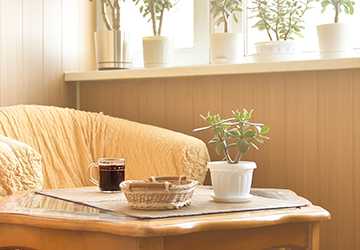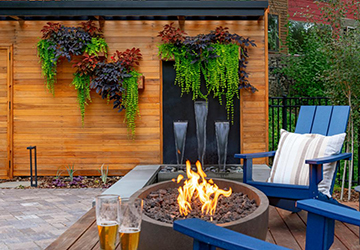As a race, we have come to live a life focused solely on making money. We ignore the intricacies and complexities of the human mind because we are constantly busy maintaining our financial situation, leading to tension and stress in our workplaces and even at home. Sometimes, this tension can become so great that it can be cut with a knife.
It would be helpful to design a house and garden with fresh water to escape this harsh environment. Before we dive into designing a Feng Shui home and garden, let’s look at what Feng Shui design means.
Feng Shui design places furniture or other structures in your home's interior spaces to promote positive chi flow. Over time, this concept has expanded to outdoor areas of our homes, such as our gardens.
Let’s look at how to design a Feng Shui home and garden!

Blunt And Curved Edges/Corners
It is one of the most important aspects to consider when designing your Feng Shui home and garden. The idea of avoiding sharp edges is to limit the flow of negative energy. The idea behind obtuse angles is to allow for natural and pleasant airflow, promoting an upbeat environment.
Regarding curved edges, one of the most recommended pieces of advice is paths. Whether it connects your garden to your back door or is located in your front yard, it can improve your ability to leave the less enjoyable moments at work and travel. Consider planting flowers in a circular pattern or creating raised flower beds that follow a curved path.
Seating Is A Must
In designing a Feng Shui home or garden, seating must be in every homeroom and garden. There should be at least two seats to promote the concept of the family sitting together and spending time together. This practice of spending time with family brings prosperity and goodwill.
Even in your garden, you can place a small table with chairs to enjoy afternoon tea. Not only can you spend time with your family, but you can also balance your energy with nature.
Make Use Of Your Space
Every corner of your home should have a purpose. Even though we're talking about your front yard, have swings and seesaws available and encourage your kids to play there. When every room in the home has a purpose, the flow of energy benefits because it's constantly moving.
Plant Feng Shui Plants
When designing your Feng Shui home and garden, choose Feng Shui plants. These plants create a positive atmosphere in your home and even outdoors. It's best to avoid plants that are thorny or have a specific shape, such as cacti.
Plants like pansies, bamboo, areca nut, and dogwood are all important choices.
Use Bagua Chart
If you have a house plan handy and want to design a Feng Shui house and garden, consider using a Bagua diagram. Place it at the top of the floor plan, so you know where to place plants, which way your beds should be, etc. Bagua charts are designed to create the perfect plan for you, showing you how to use space, location and orientation best.
Encompass All Five Elements
The five elements that must be incorporated into your home to create a Feng Shui house and garden include wood, fire, water, metal and earth.

Once you incorporate the energy of all these elements into your home's exterior and interior, you can practice positivity!
Declutter Declutter Declutter
Go rack by rack, closet by closet, and get rid of anything that no longer has a use, from old, worn-out shirts and clothes to books you may never read again. Please let this go. If you only put some meaningful and connotative things in your home, the aura of your home will appear more luxurious.
Soft Natural Borders
Let’s say you want to define the boundaries of your home based on Feng Shui home and garden design. In this case, you prefer softer natural borders where energy exchange is easier between places. Enable both sides of the border. Plant shrubs or pots in a spiral pattern to ensure they look natural.
Energy Center
Let us focus on your garden. To design your house or garden in Feng Shui, you need to understand the concept of energy focus. It can be a fountain in the garden's centre or a tall tree. Let it appear as a centre of energy.
Warm and Neutral Color Scheme
The colour scheme you choose will affect the overall energy of your home. Try to choose neutral and warm colours to convey a feeling of comfort and hospitality. Additionally, when it comes to your home's exterior, paint it in colours commonly found in nature to make your home look like an extension of nature.
Conclusion:
It would help if you were open to all suggestions to design a Feng Shui house and garden. Every aspect of the design has been carefully thought out to create positive airflow that will lift your mood and make the air in your home comfortable! Feng Shui is a must in today’s life to make your home safe and happy!
















